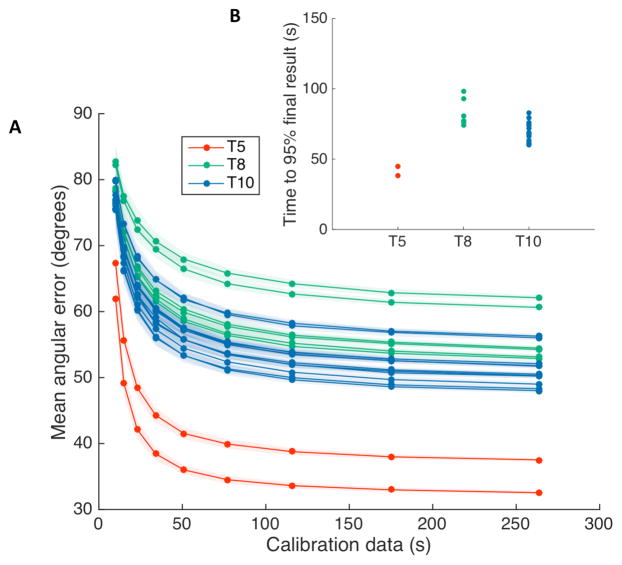Fig. 3.
Bootstrapped angular error as a function of each participant’s neural features used to simulate decoding. (A) For each experimental session, a decoder was trained using a random subsample, without replacement, and then used to mean angular error for another subsample of the same size. Decoder predictions were bootstrapped 100 times. Intuitively, the decoding performance would approach 90 degrees as the amount of data approaches zero, since a poor-quality decoder (e.g. one with limited training data) would decode a random angular error between 0 (perfect) and 180 (opposite) degrees to the target. The average of a large number of random angles drawn between 0 and 180 degrees would average to be 90 degrees. (B) The angular error curves were fit using a decaying exponential, and the amount of data required to achieve 95% saturation of the peak angular error performance was computed. The bootstrapped mean angular error saturated in less than 3 minutes for all three users. (mean +/− standard deviation; participant T5: 41.6s +/− 4.6s; T8: 83.3s +/− 9.9s; T10: 69.3s +/− 7.5s).

